Learn
Texas Annexation and War with Mexico
Americans in Texas
To begin, watch Tejas and The Alamo (12:11). PBS login information.
As you watch, you should be able to answer the following questions:
- Who lived in west (modern-day California, Arizona, New Mexico, and Texas) from the days of the conquistadors through the early 1800s? What language did these non-Native American people speak? What country ruled over this land?
- What happened to Mexico in 1821?
- Why did Mexico invite American settlers to Texas? Who led the first group of American settlers into Texas? How did Austin's group get permission to settle Texas?
- What happened to escalate tensions between Mexico and the homesteaders? Describe the types of Americans who settled in Texas. By the early 1830s, how many Americans had settled in Texas? What was their relationship like with the Spanish-speaking Tejanos?
- Who was Sam Houston? What was his role in the fight for Texas independence?
- Who was Santa Anna?
- How did President Andrew Jackson respond to the Texan rebellion?
- What happened at The Alamo? What did Santa Anna do after the Alamo?
- How did Texas declare its independence?
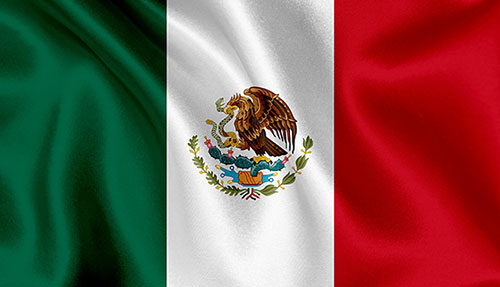
The Texas Revolution after the Alamo
Next, watch We Go to Conquer (6:11). You should be able to answer the following questions while you watch:
- What did settlers in Texas do after the Texan defeats at the Alamo and Goliad?
- Where was Sam Houston's army after the Alamo and Goliad?
- What was Santa Anna's mistake? How did it lead to a Texan victory at San Jacinto?
- What were the three independent republics in North America at this time?
- Who was the new President of Texas after the Texas Revolution?
To Recap
In the early 1800s, Moses Austin made an application to sell land and settle in Texas, but he died shortly after reaching an agreement with the Spanish.
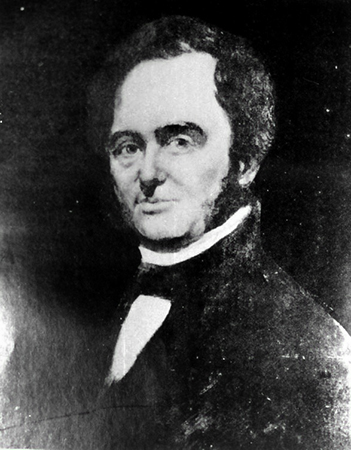
His son Stephen fulfilled Moses's dream of moving to Texas. After receiving a grant from Mexico in 1821, Stephen F. Austin led almost 300 families across the Sabine River and established the first American settlement in Texas.
Shortly after the Austin Party arrived in Texas, Mexico declared independence from Spain. However, Stephen Austin made an agreement with the new Mexican government to remain on the land.
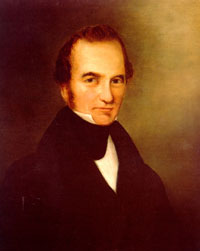
By 1830, Americans outnumbered Mexicans 3 to 1 in Texas. Mexico tried to stop the immigration of Americans into Texas, but American settlers continued to pour in, soon outnumbering them tenfold. A future leader in the Texas independence movement, Sam Houston, arrived in Texas in 1832.
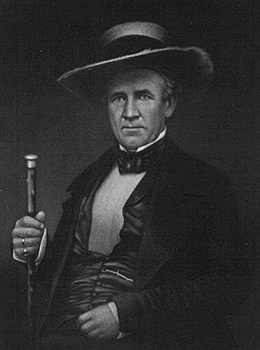
In 1836, Texas declared independence from Mexico. General Antonio López de Santa Anna was the President of Mexico. At first, he promised to restore greater autonomy for Texas. Instead he declared himself dictator and sent an army to put down the Texas rebels who wanted independence.
The War of Texas Independence was short, but bloody. On March 6, 1836, Texans lost the Alamo at San Antonio.
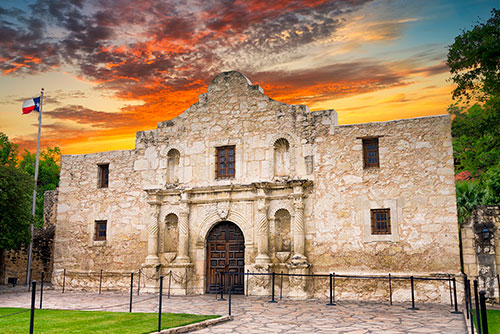
Every American and Tejano fighting for Texas independence was killed at the Alamo, including notable American figures Jim Bowie, a wild adventurer after whom the Bowie knife is named, and Davy Crockett, a former Tennessee Congressman. Both of them were frontiersmen and pioneers, and stories and tales about their lives have made them American folk heroes.
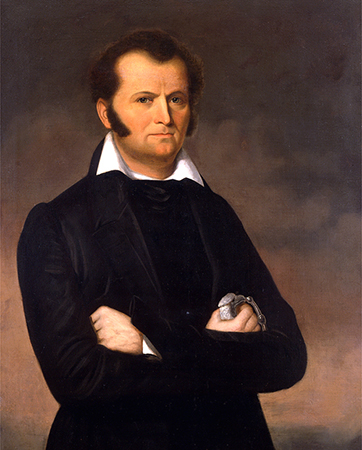
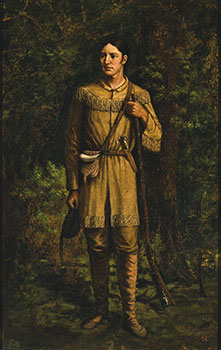
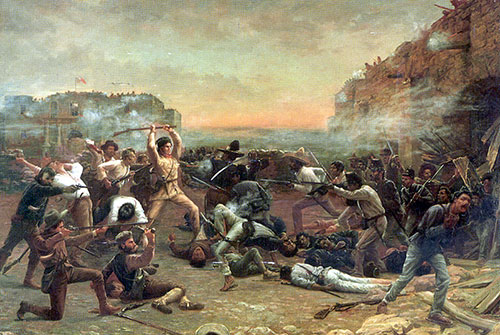
In hopes of going after the new Texas government after the Alamo, Santa Anna split his troops into two groups. Houston's army doubled back behind Santa Anna's army at a bend in the river called San Jacinto. On April 21st, 1836, Santa Anna's army was surrounded by water on three sides and by Houston's 800 men army on the other. Houston's army attacked. They were followed quickly by an army led by Captain Juan Seguín, a Tejano who had escaped the Alamo seize before the fighting began in order to call for reinforcements.
The fighting at San Jacinto lasted just 18 minutes, but the slaughter lasted another hour. 600 Mexicans were killed and 700 surrendered, but only 6 Texans died. Santa Anna was taken prisoner and forced to recognize Texan independence.
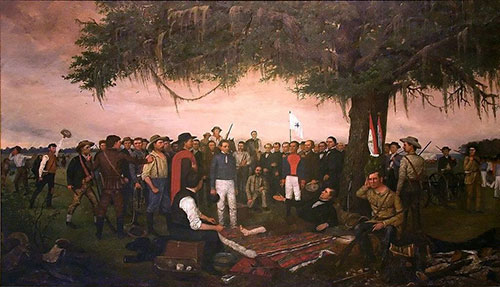
Santa Anna was forced to recognize Texas independence.
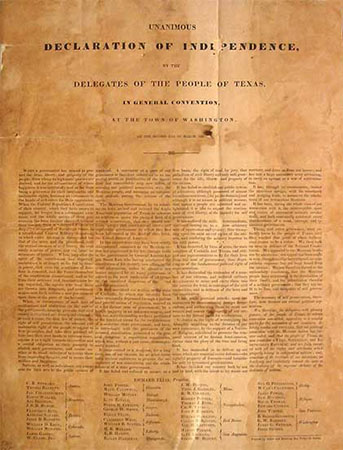
From 1836-1845, Texas was an independent country.
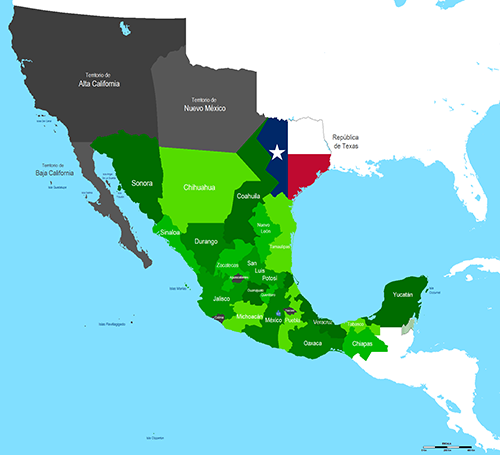
I'm sure you've heard Texas's nickname, the Lone Star State. Do you know why this is? When Texas was a province of Mexico, it was part of an area called Coahuila y Tejas. The original flag for this region had two gold stars in the middle of the red, green and white stripes of the Mexican flag. Later, when Texas won its independence, it chose to represent itself with a flag of one, lone star.
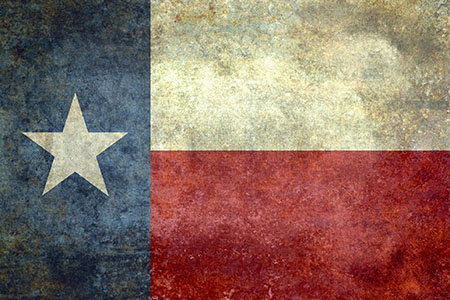
Texas Joins the Union
President Sam Houston and other Texans knew they were not strong enough to succeed as an independent country. Texas experienced financial hardships, as well as clashes with Mexicans and Native Americans. Most Texans wanted to join the United States, including Houston, who petitioned the US government for entry to the union.
As you learned earlier, many white settlers brought their enslaved African Americans with them to Texas. Therefore, they wanted Texas to join the Union as a slave state. Northern Congressmen who opposed slavery blocked this move, as they didn't want more states to allow the institution of slavery. They especially didn't want to disrupt the even balance between free states and slave states that the Union currently had.
During the presidential election of 1844, one of the biggest issues was the annexation of Texas. The Whig Party candidate Henry Clay said he wanted to annex, or add, Texas to the Union, but only if they could do so without going to war with Mexico. However, this was impossible! Mexico had made it known that if Texas joined the United States, they would declare war. Mexico felt Texas was still part of Mexico and they were willing to go war over this belief! So really, Clay opposed annexation because of this complication.
The Democratic Party candidate was James Knox Polk. He fully supported the annexation of Texas, even if it meant war with Mexico.
Guess what? Polk won the election of 1844 and Texas joined the United States in 1845 as the 28th state in the Union.
The Mexican-American War
President James K. Polk served only one term, by choice. His goal was to expand the territory of the United States all the way to the Pacific Coast – again we're talking about Manifest Destiny! Watch the video James Polk | 60-Second Presidents (1:18) to see how he accomplished his goal.
Open James Polk | 60-Second Presidents in a new tab
More Westward Expansion
After expanding the United States to include Texas, Polk turned his sights to the Oregon Territory. He threatened Britain with war over their claim, but he ended up negotiating an agreement that added modern-day Washington, Oregon, and Idaho to the Union.
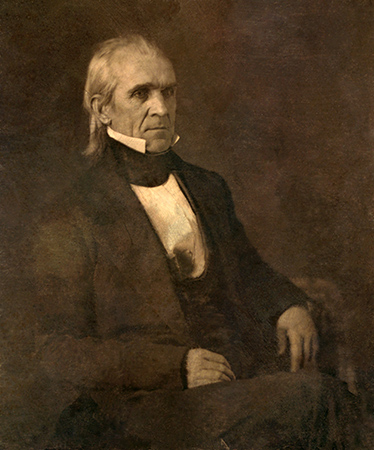
In 1846, President James Polk wanted war to legitimize a claim to Mexican land in the southwest, in the modern-day states of New Mexico and California. When Mexico refused to sell additional lands in the southwest, President Polk provoked a confrontation with Mexico. Polk ordered General Zachary Taylor to blockade the Rio Grande, and a border skirmish ensued. This kicked off a two-year confrontation called the Mexican-American War, which led to huge territorial gains for the United States.
Watch The Mexican-American War (2:29) to learn about the war and its results. (Video transcript of The Mexican-American War)
Territories Change Hands After The War
The Mexican-American War ended with the 1848 Treaty of Guadalupe Hidalgo, which transferred vast amounts of land from Mexico to the United States. As part of the treaty, present-day California, Arizona, and New Mexico, as well as parts of Utah, Nevada, and Colorado were ceded to the United States by Mexico. The land given over to the United States after the Mexican-American War is known as the Mexican Cession.
The United States acquired even more territory with the Gadsden Purchase. The United States agree to pay Mexico $10 million for a 29,670 square-mile portion of Mexico that later became part of Arizona and New Mexico.
With these changes, Mexico lost half of its territory and the United States gained over one-third of theirs.
Watch the video How the Mexican-American War Affected Slavery | The Abolitionists (3:36) to understand some of the consequences to this territory grab.
Open How the Mexican-American War Affected Slavery | The Abolitionists in a new tab